Have you ever wondered how the safety and quality of everyday products are ensured? How can you be sure that the food you eat, the medicine you take, and the toys your children play with are free from harmful contaminants? Chemical testing is vital in answering these questions, ensuring products meet stringent safety and regulatory standards. From pharmaceuticals and food to electronics and building materials, chemical analysis verifies purity and composition, protecting consumer health and optimizing manufacturing processes. At 360Compliance, we specialize in comprehensive chemical analysis services, helping you navigate complex regulations and ensure your products are safe, compliant, and of the highest quality.
What Is Chemical Testing?
Chemical testing is a crucial process that involves analyzing the composition and properties of various materials and products. It provides valuable insights into the substances present, ensuring compliance with safety standards and regulations. In essence, chemical test reveals the fundamental nature of a material or product, helping manufacturers maintain quality and meet industry requirements.
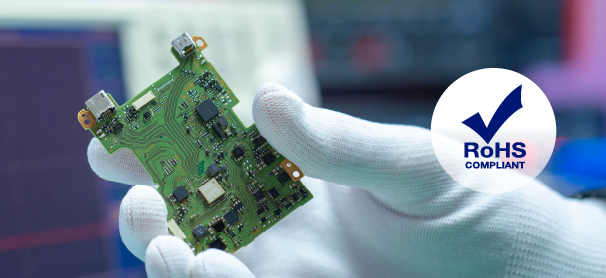
RoHS Compliance
Have you ever wondered how electronics manufacturers ensure their products are environmentally friendly and free of hazardous substances? RoHS Certification, or Restriction of Hazardous Substances, is a critical directive from the European Union (EU) that ensures electrical and electronic equipment (EEE) comply with strict environmental standards. This certification aims to reduce environmental pollution from e-waste, protect human health from exposure to hazardous materials, and promote the use of safer materials in electronics. Discover how 360Compliance can help your company navigate the complexities of RoHS certification, ensuring your products meet these essential standards. What is RoHS Certification? RoHS Certification, or Restriction of Hazardous Substances, ensures products comply with strict environmental standards. A European Union (EU) directive prohibits using certain hazardous substances in electrical and electronic equipment (EEE). This directive aims to: Reduce environmental pollution from e-waste Protect human health from exposure to hazardous materials Promote the use of safer materials in electronics The RoHS directive, also known as Directive 2002/95/EC, was first adopted in 2002 and has been updated multiple times. The latest version is RoHS 3 or Directive 2015/863. This version restricts the use of 10 specific substances, such as: Lead (Pb) Mercury (Hg) Cadmium (Cd) Hexavalent chromium (Cr6+) Polybrominated biphenyls (PBBs) Polybrominated diphenyl ethers (PBDEs) Bis(2-ethylhexyl) phthalate (DEHP) Dibutyl phthalate (DBP) Benzyl butyl phthalate (BBP) Diisobutyl phthalate (DIBP) Why Do You Need RoHS Certification? When you are indulging in anything related to environmental regulations and their compliance, then there is no other substitute than acquiring a thorough knowledge about all associated rules. The European Union (EU) has stringent standards such as RoHS. RoHS compliance is crucial for all people who are competing internationally in the electronics market. Therefore, we are here to discuss all aspects of RoHS that every electronic manufacturer needs to know first. What Products Are Covered by the RoHS Directive? The RoHS directive primarily applies to electrical and electronic equipment (EEE), encompassing a wide range of categories: Large household appliances Small household appliances Information and communication technology equipment Consumer electronics Lighting equipment Electrical tools Method of RoHS Testing There are several different methods of RoHS testing, which are used according to the purpose: Non-destructive analysis based on X-ray fluorescence. Wet chemical analysis, which is suitable for complex compounds and provides more accurate testing. After the XRF screening, these results can verify any anomalies detected. XRF screening, which is convenient, easy, and fast, and identifies any hazardous compounds. This method typically obtains comprehensive information regarding a finished product. Steps Towards RoHS Compliance If you plan to sell electrical products in the EU market, you must become familiar with the RoHS Directive and follow the procedure for RoHS compliance. 1. Explain environmental requirements monitoring for your product. 2. Create an action plan. 3. Organize appropriate testing. 4. Draw up a Declaration of Conformity (DoC) that includes: ID number with the product name and version, manufacturer’s data, and sign; Product image and description; Compliance requirements; Issue date; Name and signature of the responsible person. 5. Conformity marking. RoHS Non-Compliance: Risks for Manufacturers If a company does not pay enough attention to RoHS, but its products are mentioned in the RoHS Directive, this can lead to serious risks, such as: Financial loss due to the inability to access the EU market and gain profits. Reputation loss in case of publications about hazardous components in your products. Problems in proving compliance if you do not have enough information on your supply chain. Your staff will lose time handling all these compliance issues instead of doing their regular job. RoHS Certification FAQ Which Companies Are Affected by RoHS? The RoHS Directive prohibits the use of certain chemicals in electronic goods, their sub-assemblies, or components. All companies operating in EU countries must follow these rules, starting from manufacturers and ending with distributors. Are the RoHS Regulations Mandatory All Around Europe? Yes, EE (Electronic & Electronic Equipment) must pass the RoHS inspection to be sold in any European nation. Note that each member of the EU implements the RoHS regulations differently. Thus, electronics manufacturers always planning to import some products into the European Union must be aware not just of the directives of the EU but also of some individual methods that every nation uses to execute them. Are There Any Exemptions from the Regulations of RoHS? Some specific categories, as well as applications, are presently exempted from the compliance of RoHS. All exemptions cover all different kinds of military, scientific, industrial, and medical equipment, and renewable energy. Spare parts for all equipment kept on the market exempted from the compliances of RoHS before July 1st,2006. Does it Apply to Other Products Rather than Electronics? Technically, it is a big no, but the manufacturing procedures of products in the European Nations are for sale in line with the registration across the EU, Authorization, Evaluation, and Restriction of Chemicals directive (REACH). All substances restricted by RoHS compliance are also restricted somehow by REACH; thus, if any product is not under RoHS compliance, it is more likely to comply with REACH as well. Why Choose 360Compliance For RoHS Certification? 360Compliance team provides project management and consulting services related to RoHS certification for companies aiming to enter the EU market. Note that electronic products are certified for five years only, and additional RoHS Certification is required after changes in certain raw materials or design features. Therefore, it is worth engaging 360Compliance professionals in this area, who guarantee: Fixed and transparent pricing policy; Strict observance of deadlines; Full turnkey project management; Support at all the steps of certification; Testing and certification for a variety of purposes; Access to the global market in more than 195 countries. If you have any questions, don't hesitate to contact the 360Compliance team for professional assistance in achieving RoHS compliance, which will significantly benefit your company's growth.
Learn more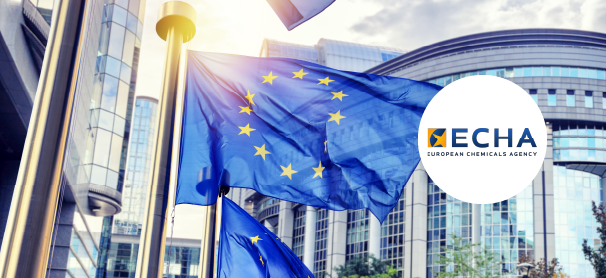
REACH (SVHC) Certification
Have you ever wondered how companies ensure their products are safe for both human health and the environment? The REACH Regulation, which stands for Registration, Evaluation, Authorisation, and Restriction of Chemicals, is a critical European Union regulation designed to protect against chemical risks. It requires manufacturers and importers of chemical substances to register their products and provide detailed safety data. Additionally, REACH identifies Substances of Very High Concern (SVHCs), which are hazardous chemicals subject to stricter controls and potential phase-out. Understanding and complying with REACH is essential for any company operating within the EU market. Discover how 360Compliance can assist your company in navigating the complexities of REACH compliance, ensuring your products meet these vital standards. What is REACH Regulation? REACH stands for Registration, Evaluation, Authorisation, and Restriction of Chemicals. It is a European Union regulation to protect human health and the environment from chemical risks. REACH requires manufacturers and importers of chemical substances to register their products and provide safety data. It also identifies Substances of Very High Concern (SVHCs), particularly hazardous chemicals subject to stricter controls and potential phase-out. Learn more about the REACH regulation information requirements here. What Does REACH Certification Regulation Entail? REACH compliance is required for companies manufacturing or importing chemicals into the EU. It involves several steps, including: Registering your chemicals with ECHA Providing safety data on your chemicals Identifying and managing SVHCs in your products Keeping up-to-date with changes to the REACH regulation Why is REACH Compliance Important? Companies that meet the REACH requirements get the following benefits: They are proven to protect human lives and the environment. They can operate in the EU market. There are no problems with litigation and fines. Saving natural resources. How to Apply for REACH Authorization? Those who would like to confirm their REACH compliance must apply a declaration that includes: A report on chemical safety. An assessment of other substances that can be used instead of the declared one. A plan for further replacing the claimed substance when the alternative becomes available. Sometimes, developers provide complete material disclosures (FMDs). However, it is worth mentioning that there is no uniform standard for REACH declaration. Therefore, you can use such standards as IPC-1752A, IPC-1754, or IEC 62474. In any case, you must show that the hazards were alleviated as much as possible and that there will be an opportunity in the near future to substitute the compounds with other ones that are less harmful. What is (SVHC) Under the European Union? The European Union REACH regulation considers some substances of very high concern (SVHCs). Under their regulations, these substances are very serious or incapable of reversing their negative effects on the environment and human health. The European Chemical Agency (ECHA) developed the list of Substances of Very High Concern (SVHC). It also has a special Candidate List, according to which the EU REACH Regulation makes instant inquiries on manufacturers who must declare the presence of these substances. If the SVHC content in products is more than 0.1% by weight, customers must be informed and stay aware of possible hazards. In addition, the product must be accompanied by instructions on safe use for customers. REACH SVHC Compliance consists of the following steps: Determination of SVHCs content in the product and their precise quantity. If customers make requests, the manufacturer has 45 days to inform them about the presence of such substances and their content in the product. Products must correspond to the requirements and be safe for both people and the environment. Any substance identified as an SVHC may be included in the Candidate List and later added to the Authorization List (Annex XIV). Therefore, It is important for vendors to provide safety data on articles containing SVHCs, including information on how the substance is used and its composition. How 360Compliance Can Help With REACH Compliance? REACH Compliance starts by tracking all the data on your supply chain and determining the properties of all the substances that you use. If there are any SVHCs in the products, you have to identify their suppliers, and then you will have to draw up all the necessary documentation properly. 360Compliance provides perfect management solutions that will help you to navigate through this process and keep up to date with changes that are periodically made to the SVHC lists. Do not hesitate to contact the 360Compliance professional team and benefit from high-quality services that are both cost-efficient and contribute to the expansion of your client base and market possibilities.
Learn more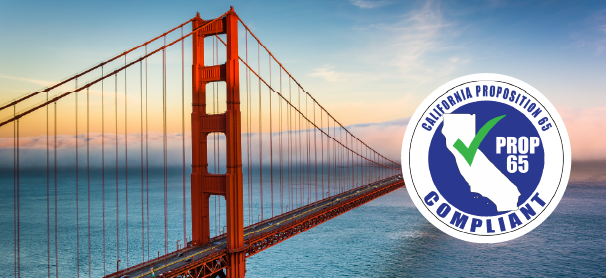
California Proposition 65 (Prop 65) Services
Have you ever wondered how California protects its residents from harmful chemicals? California Proposition 65, also known as the Safe Drinking Water and Toxic Enforcement Act of 1986, is a vital law to safeguard the state's drinking water from contamination by chemicals known to cause cancer, congenital disabilities, or other reproductive harm. This regulation requires manufacturers to place clear warnings on products containing such substances, ensuring consumers are informed about potential risks. Manufacturers and importers must comply with Prop 65 to avoid significant penalties and ensure they can legally sell their products in California.Discover how 360Compliance can help you in navigating the complexities of Prop 65, making sure your products meet these essential standards. What is California Proposition 65? California Proposition 65, also known as the Safe Drinking Water and Toxic Enforcement Act of 1986, is a California law that aims to protect the state's drinking water sources from contamination by chemicals known to cause cancer, congenital disabilities, or other reproductive harm. Proposition 65 has been revised and republished annually and currently contains a list of substances divided into carcinogens and reproductive toxicants. Prop 65 doesn't ban harmful chemicals but requires clear warnings on products containing these substances. Still, the manufacturer must provide a clear warning of their presence with the indication of exact quantities. There are around 300 listed compounds for which a safe harbor level has been established. It is crucial to ensure that the level of these compounds doesn't exceed the safe harbor limit. Why is CA Prop 65 Compliance Important? California Proposition 65 aims to notify individuals of potential chemical hazards and safeguard their health. All new products must pass testing according to Prop 65 requirements to be allowed for sale in the state. Companies that don't follow the rules may incur a penalty of up to $2,500 per violation per day. What Chemicals are on the California Prop 65 list? The Proposition 65 list currently includes more than 950 substances that can cause reproductive harm, congenital disabilities, or cancer. It contains components used in goods and household items, food, drugs, dyes, pesticides, solvents, etc. The listed chemicals may also be used in manufacturing and construction or be a by-product of production operations. The list is revised annually. In March 2022, Proposition 65 added perfluorooctanoic acid (PFOA) to the list of known carcinogens. This means that any products containing PFOA sold in California must comply with the law's warning label requirements. Read more about the addition of PFOA to the Prop 65 list How Shall I Comply with California Prop 65? According to the rules, the manufacturer must clearly warn of the presence of such a substance on the product or packaging or at the distribution point. After adding a new substance to the list, the company must complete this task within 12 months. Chemicals listed as carcinogenic A warning is necessary when the quantity of a substance exceeds the ‘no significant risk level’ (NSRL). This level is the amount of exposure that, over a 70-year lifespan, results in no more than a one in 100,000 chance of developing cancer. Chemicals listed as causing congenital disabilities and other reproductive harm A warning is necessary when the amount of a substance exceeds 1/1,000th of the 'maximum allowable dose level’ (MADL). This value corresponds to the concentration that causes no harm to humans or laboratory animals and is divided by 1,000. What are the Consequences of Non-Compliance with Prop 65? If a product sold in California contains a substance from the Prop 65 list without warning, the manufacturer will receive a 60-day violation notice. During this period, government officials can take legal action, and after its expiry, a private company can file a lawsuit against the manufacturer. Generally, a settlement amount for such a lawsuit is about $65,000. For large retailers and manufacturers, settlement amounts may reach $1,000,000. Brands and retailers prioritize compliance with Prop 65 testing requirements to avoid financial and reputational losses. It is much easier to follow the requirements than to deal with the consequences of non-compliance. Comply with California's Prop 65 Through our Expertise 360Compliance professionals have the knowledge and experience to assist you with Prop 65 testing from scratch. They guarantee: Fixed and transparent costs; Strict adherence to deadlines; Full turnkey management; Support and technical assistance; Testing and certification for a variety of purposes; Access to the global market with more than 195 countries. Contact the 360Compliance team to learn more and ensure your products meet all the rules and requirements.
Learn more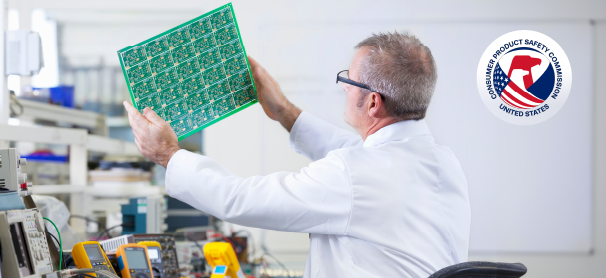
CPSC Certification
Ever wondered how manufacturers ensure their products are safe, especially for children? How do they navigate the labyrinth of safety standards and certifications? Achieving CPSC Certification is crucial to making sure your products are safe, reliable, and compliant with the U.S. Consumer Product Safety Commission's standards. But how do you tackle this complex certification process? That’s where 360Compliance steps in. Our expert team streamlines the journey, offering comprehensive services to help you achieve CPSC Certification efficiently. From detailed testing to strict safety validations, 360Compliance ensures your products meet all necessary standards, making the certification process faster, simpler, and more cost-effective. What is CPSC Certification? CPSC certification refers to the certification process conducted by the U.S. Consumer Product Safety Commission (CPSC), a federal agency dedicated to protecting consumers from unreasonable risks of injury or death associated with the use of consumer products. The reason for establishing the Consumer Product Safety Commission was that many products and items we use daily contain a myriad of potential risks, ranging from mechanical and chemical to electrical and even fire hazards. CPSC's primary goal is to ensure all of these products are safe and to protect us from any hazardous side effects. Over the years of its operation, CPSC has enforced and managed many federal regulations related to using various products. Products intended for children aged 12 or younger must be tested by a laboratory approved by CPSC and have a label confirming their conformity to the applicable safety rules. Any products intended for general use are also subject to testing and marking with a “General Certificate of Conformity” label. Both manufacturers and distributors are responsible for meeting these certification requirements. What Products are Subject to the CPCS Certification The complete list of products subject to the CPSC certification includes over 250 items. The following categories are the most widespread: Carpets and rugs Chemicals Toys and items for childcare Clothing and cosmetics Food and medicines Fireworks Furniture and household items Tools for leisure and sport Third-Party Testing of Children’s Products A manufacturer must comply with safety rules for children’s products. A third-party laboratory usually performs the testing but does not issue the certificate. The manufacturer or the importer issues it based on the testing results. Chemical analysis is a crucial part of ensuring product safety, especially for children's products. This involves testing for harmful substances like lead and phthalates, as mandated by CPSC regulations. Learn more about chemical testing and its role in product safety. Testing of Non-Children’s Products Products for general use must also meet safety requirements. The manufacturer confirms compliance by issuing the certificate. Why Choose 360Compliance For CPCS Certification The 360Compliance team has experienced professionals who can assist you with going through this type of testing and certification from scratch. You will get the following benefits: Streamline your CPCS certification process: Our experienced team takes care of everything, from initial assessment to final approval, ensuring you meet all requirements efficiently. Gain peace of mind with guaranteed timelines: Meet critical deadlines with confidence thanks to our strict adherence to project schedules. No more unexpected delays. Get expert support every step of the way: Our certified professionals are at your side to answer questions, address concerns, and provide technical guidance throughout the process. Experience the cost-effective advantage: Fixed and transparent pricing eliminates hidden fees and surprises, allowing you to budget effectively. Together with the 360Compliance team, you will get the required information and the best result ever. Therefore, do not hesitate to contact us to start your way toward success.
Learn moreWhy Is Chemical Testing Important?
This chemical analysis is vital in ensuring safety, quality, and compliance. From guaranteeing the purity of your food and medicine to verifying the durability of your building materials, chemical analysis testing touches every aspect of our lives. Here are just a few ways it protects you:
- Ensuring Product Safety: Identifying harmful contaminants in food, toys, and consumer goods before they reach your hands.
- Safeguarding Environmental Health: Monitoring air and water quality to protect our planet and health.
- Optimizing Manufacturing Processes: Ensuring consistent product quality and minimizing production errors.
- Meeting Regulatory Requirements: Complying with various industries’ national and international safety standards.
Which Products Need Chemical Testing?
Various products across different industries benefit from chemical testing to ensure quality, safety, and compliance with regulations. Some key product categories that commonly undergo chemistry testing include:
- Pharmaceuticals and Medicines
- Food and Beverages:
- Cosmetics and Personal Care Products
- Chemicals and Raw Materials
- Textiles and Apparel
- Toys and Children’s Products
- Electronics and Electrical Products
- Automotive Materials and Components
- Building Materials
This testing verifies the composition of materials, identifies contaminants or hazardous substances, and ensures adherence to industry-specific standards and regulations.
Certification Process Involving Chemical Analysis
- Submission of Samples: Manufacturers submit representative samples of their products for comprehensive chemical analysis.
- Laboratory Testing: Experienced laboratories conduct various tests, including composition analysis, purity assessment, and identification of potential contaminants.
- Results Evaluation: Certification bodies meticulously evaluate the chemical testing results to ensure they meet the specified safety and quality criteria.
- Certification Issuance: Upon successful completion of chemistry lab testing and overall compliance, the certification body issues the relevant certification, validating the product’s adherence to standards.
360Compliance Chemical Analysis Services
At 360Compliance, we specialize in comprehensive chemical analysis testing services. Our cutting-edge laboratories and expert chemists are dedicated to delivering accurate and reliable results across diverse industries. From initial raw material assessments to final product evaluations, we ensure compliance with global standards.
Benefits of our services
Using 360Compliance services for chemistry testing, you will get the following benefits:
- Raising the quality and market competitiveness of your products.
- Reducing time and development costs for testing new products.
- Ensuring compliance with safety standards and legal requirements.
Chemical Testing in Certification – RoHS, REACH & SVHC Testing
- Europe: RoHS (XRF Screening) & Certification
- Europe: REACH & SVHC Testing , Registration & Certification
- E-Waste (WEEE, Batteries, Packaging) registration and collection plan
- USA: California Proposition 65 testing
- USA: CPSIA / CPSC testing & certification
- Canada: Protecting Act Law certification
- Canada: CCPSC consumer’s safety
Contact 360Compliance for a consultation and let us support your chemical testing needs, contributing to safer, more reliable products.
Other Certifications
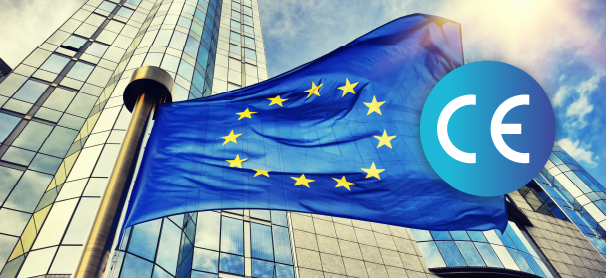
CE Certification
Why is CE Certification Important? CE certification confirms that the product entered the market legally, has all the permits, and does not pose any threat to human health or the safety and integrity of the environment. Thus, the CE mark signals both buyers and official regulators about the successful completion of all testing and certifying procedures. What Countries Require CE Marking? The mandatory CE certification applies to products entering the market of all 30 countries of the European Economic Area (EEA). It also covers Switzerland and Turkey, the United Kingdom, which have signed a number of bilateral agreements with the EU, including the CE marking requirement. Additionally, the UK indefinitely recognizes the EU's CE mark for various manufactured goods placed on the UK market. What Products Need a CE Certification? To determine whether a product requires CE Certification, manufacturers should consult the relevant EU directives and harmonized standards. Notified bodies, independent organizations authorized to assess product compliance with EU directives, can also provide guidance. Product Category Examples Electrical equipment Household appliances, power tools, lighting, cables Toys Dolls, action figures, toy cars, construction sets Machinery Industrial machinery, agricultural machinery, construction machinery Medical devices Surgical instruments, implants, diagnostic equipment Construction products Cement, steel, windows, doors Personal protective equipment Safety helmets, goggles, gloves, boots Pressure equipment Gas cylinders, boilers, pressure cookers Gas appliances Cookers, heaters, gas water heaters Aerosols Spray paint, deodorants, insecticides Telecommunications equipment Mobile phones, routers, modems Radio equipment Radios, televisions, Bluetooth devices Lifts Escalators, elevators, dumbwaiters Explosive devices Fireworks, detonators, ammunition What Products Do Not Require a CE Marking? Not all products imported into the listed countries require CE marking certification. In particular, goods belonging to the following categories, which are covered by other Directives, are subject to a different type of certification: Chemical products Cosmetics Food products Pharmaceuticals How to Obtain CE Certification? Obtaining a CE certificate involves a systematic process: Identify Applicable Directives The Directives include general safety requirements for products placed on the market. The specific parameters and technical requirements are detailed in the harmonized standards. If a product does not fall under any Directives requiring CE marking, it must still comply with a document outlining general safety requirements. Directive Number Product Category 2014/35/EU Low Voltage Directive (LVD) 2014/30/EU Electromagnetic Compatibility (EMC) 2011/65/EU Restriction of Hazardous Substances (RoHS) 2014/53/EU Radio Equipment 2014/34/EU Equipment and Protective Systems for Use in Explosive Atmospheres (ATEX) Regulation (EU) 2017/745 Medical Devices Regulation (EU) No 305/2011 Construction Products 2006/42/EC Machinery Regulation (EU) 2016/425 Personal Protective Equipment 2014/31/EU Non-automatic Weighing Instruments Regulation (EU) 2016/426 Appliances Burning Gaseous Fuels 2014/28/EU Explosives for Civil Uses 90/385/EEC Active Implantable Medical Devices 98/79/EC In Vitro Diagnostic Medical Devices 2014/90/EU Marine Equipment Directive 2013/53/EU Recreational Craft 2014/33/EU Lifts 2014/68/EU Pressure Equipment Regulation (EU) 2016/424 Cableway Installations to Carry Persons 2014/32/EU Measuring Instruments 2013/29/EU Pyrotechnic Articles Full list of CE directives you can find here Identify the requirements for the product Each Directive specifies essential requirements that a product must meet. To demonstrate conformity, manufacturers must identify applicable 'harmonized European Norms' (hENs), which are standards that offer a presumption of conformity to the essential requirements. These standards vary depending on the product's classification and intended use. Harmonized standards, available on the European Commission’s website, simplify compliance through clear frameworks. Determine if third-party assessment is needed Certain directives may require third-party assessment by a Notified Body (NB), an organization authorized by European authorities. For example, the Medical Devices directive and others mandate the use of an NB. However, the EU has reduced the number of products requiring NB assessment, placing more responsibility on manufacturers. Assess Product Conformity Conduct a thorough assessment of your product to ensure it conforms to the essential requirements outlined in the relevant directives. This step may involve testing and verification processes to demonstrate that your product meets the necessary safety and environmental standards. Compile a Technical File Create a comprehensive technical file that documents every aspect of your product's design, development, and manufacturing process. This technical file, also known as the Technical Construction File, should include technical descriptions, drawings, circuit diagrams, bills of materials, specifications, test reports, and other relevant information. The file serves as evidence of conformity and must be maintained for up to 10 years after the last unit is manufactured. Make a Declaration And Affix The CE Mark When satisfied that the product conforms to the applicable CE Marking Directives, the manufacturer must complete a Declaration of Conformity. It includes information about the product, directives, standards applied, and the responsible party in the company. Following this, affix the CE mark visibly on the product, signaling compliance with EU standards. This is the final stage, after which the product may be launched to the EU and EEA markets. Responsibility of Manufacturers for CE Certification To complete the standard procedure for obtaining the CE mark, manufacturers must find out which EU Directive regulates the access of products of their category to the market and check compliance with all regulations. After that, a conformity assessment is carried out, based on which a technical file is prepared. Further, the EU-authorized body examines the documents, and the manufacturer issues the EC Declaration of Conformity (DoC). When all documents are certified and the CE mark is received, the manufacturer can label with this mark their products and packaging. Responsibility of Distributors for Products with a CE Mark Distributors of goods in the EU market must ensure that the CE conformity mark has not yet expired and that the certificate itself is not fake. They also check the placement of the stamp on the product or its packaging since marking is the responsibility of the manufacturer. What Are the Benefits of CE Certification? There are several advantages to CE certification, including: Free movement of goods within the EEA Allows manufacturers to freely circulate their products within the EEA without facing additional technical barriers to trade. Increased market access CE certification can help manufacturers gain access to new markets in the EEA, as well as in other countries that recognize the EC marking. Enhanced product safety Helps to ensure that products meet high standards of safety and environmental protection. Improved consumer confidence CE certification indicates independent compliance with EU safety requirements, boosting consumer confidence. Become CE Certified with 360Compliance The CE marking procedure can be tedious and incomprehensible to non-professionals. However, the 360Compliance team will help you pass all stages of certification quickly, competently, and successfully. You will receive full project management with no hassle. You are also guaranteed technical support and a transparent pricing policy. To start the testing & certification process for obtaining a CE stamp, contact the 360Compliance team in any convenient way and get all the answers and instantly initiate the certification procedure. Frequently Asked Questions About CE Marking For How Long is a CE Certificate Valid? For each product group, a certain validity period is established, but in most cases, it is 3 years. After that, you need to go through the re-certification procedure. However, there are products for which the CE label is valid for 10 years or more. What are the Penalties for the Absence of a CE Compliance Certificate? Punishment for selling goods without the certificates in countries where the CE marking is mandatory varies widely from administrative to criminal liability. The specific article of the law that will be applied depends on the damage that a given product can cause to people or the environment. How to Get a CE Certificate? To obtain the CE stamp, it is necessary to go through a risk assessment procedure for the products offered. For this, you need to study the standards of the specific Directive that regulates access to the market for this type of products, make up a technical file, and pass testing. When all permits are issued, CE marking can be applied to the offered products. How to Authenticate a CE Certificate? You can authenticate a CE label using the official database. Also, it is possible to contact the official authority that issued the certificate and request details on this product. If it turns out that this product is not registered with official institutions, you are dealing with fake certification.
Learn more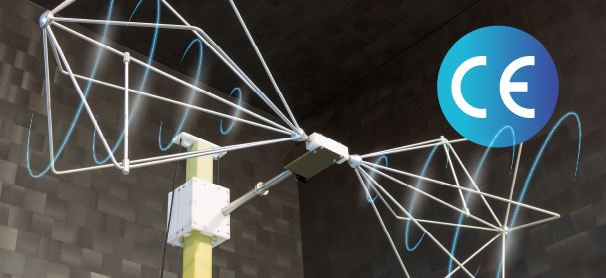
EMC Directive 2014/30/EU
Do you manufacture or sell electrical or electronic equipment in the European Union (EU)? If so, you'll need to ensure your products comply with the Electromagnetic Compatibility (EMC) Directive 2014/30/EU. Wondering how you can streamline the compliance process to ensure your products meet the EU's stringent electromagnetic compatibility requirements? 360 Compliance is here to guide you through every step, ensuring your products not only comply but thrive in the European market. What is CE EMC Certification? CE EMC Certification is a mark that indicates a product's compliance with Electromagnetic Compatibility (EMC) requirements in the European Union. EMC is crucial because electronic devices emit electromagnetic waves during operation, and without proper EMC measures, these emissions can lead to Electromagnetic Interference (EMI). The CE mark, which stands for Conformité Européenne, is a mandatory certification for products sold within the European Economic Area (EEA). It signifies that a product meets the essential EMC standards set by the European Union to ensure that it won't cause or be susceptible to electromagnetic interference. This interference could affect the proper functioning of other nearby electronic devices. The certification process is guided by Directive 2014/30/EU, which outlines the specific EMC requirements that products must meet to obtain the CE mark. This directive establishes the legal framework for electromagnetic compatibility and mandates that manufacturers thoroughly test their products for compliance. The goal is to guarantee that electronic devices can coexist harmoniously in the European market without causing disruption or compromise in functionality. Which Products Need the CE EMC Mark? If your product falls into the category of devices that can emit electromagnetic waves during operation, it likely requires the CE EMC mark. Here are some examples of products that typically need this certification: Electrical Appliances: Household appliances such as washing machines, refrigerators, and microwave. Information Technology Equipment: Computers, laptops, servers, and networking equipment. Consumer Electronics: This includes a broad range of devices like televisions, audio equipment, and gaming consoles. Medical Devices: Equipment used in the medical field, such as diagnostic machines and monitoring devices. Telecommunications Equipment: Phones, routers, and other communication devices. Industrial Machinery: Various types of machinery used in industrial settings, like manufacturing equipment and automation systems. Lighting Products: From simple light bulbs to complex lighting systems. Electronic Toys: Children's toys that incorporate electronic components or emit electromagnetic signals during play. Why is EMC Directive Important? Ensuring Market Access: Legal Compliance: CE EMC Certification is a legal requirement for placing products in the EU market. Non-compliance can result in serious consequences, including fines and withdrawal of products from the market. Enhanced Market Credibility: Products with CE EMC Certification signal adherence to high-quality standards, enhancing your brand's credibility and customer trust. Quality Assurance: Product Reliability: EMC Certification ensures that your products can function in the presence of electromagnetic disturbances, making them more reliable. Reduced Interference: Certification reduces the risk of your products causing interference with other electronic devices, preventing potential issues for end-users. How to Get CE EMC Certification? Step-by-Step Guidance: Consultation: Initiate the process with a consultation to understand your product and specific certification needs. Pre-assessment: Identify potential EMC issues and address them before formal testing to expedite the certification process. Testing and Evaluation: Utilize our accredited laboratories for comprehensive emissions and immunity testing. Documentation Support: Our team assists in preparing the necessary technical documentation required for certification. Declaration of Conformity: Once certified, we help you issue the Declaration of Conformity and affix the CE mark to your product. How long will testing take? The EMC CE certification procedure takes 4 to 6 weeks on average. If the product belongs to an industry that is regulated by other directives (e.g. CE RED), it is subject to additional tests, which increases the time required. Manufacturer's Responsibilities Related to EMC CE Certification The company that develops a product shall design it according to EMC CE norms and confirm compliance with the norms by independent laboratory tests. It is also required to: indicate the actual electromagnetic radiation level in the documentation; warn about the possible hazards associated with the use of the device; provide the user with operating instructions; indicate geographical restrictions on the use of the product, if any; keep a register of complaints; store certificates and declarations of conformity for at least 10 years; cooperate with local authorities and provide product samples to the authorities. Quick and Easy EMC CE Certification with 360Compliance Obtaining CE EMC Certification is not just a regulatory obligation; it is a strategic move to ensure your products' quality, compliance, and market competitiveness. By investing in certification, your business can access new markets, build trust with customers, and stay ahead in the dynamic world of electronics. At 360Compliance, we simplify the process, offering expert guidance and tailored solutions to ensure your products meet the highest standards of electromagnetic compatibility. Contact us to get transparent pricing, clear timelines, and technical support at all stages of the procedure.
Learn more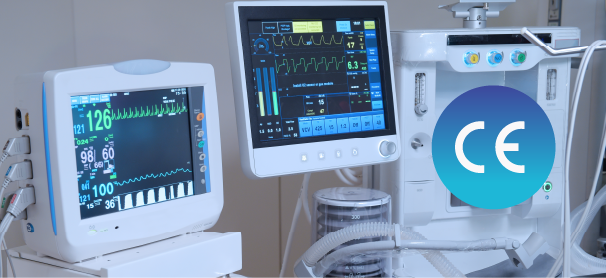
CE Mark Medical Device
Do you manufacture or plan to sell medical devices in the European Union (EU)? If so, obtaining CE marking for medical devices is essential for legal market access. This signifies compliance with the Medical Devices Regulation (MDR) 2017/745. Looking for a partner to demystify the CE marking process and ensure your medical devices comply with EU regulations? At 360Compliance, we're here to provide guidance and support to address any questions you may have. What is CE MD Certification? CE MD certification is a mandatory requirement for all medical devices that are sold in the European Union. The CE mark is a symbol that indicates that a product has met all of the applicable EU directives and regulations. To obtain CE marking for medical devices, manufacturers must adhere to the regulatory framework outlined in the Medical Devices Regulation (MDR) or the In Vitro Diagnostic Regulation (IVDR). The primary objective of CE approval for medical devices is to ensure the safety, effectiveness, and alignment with the needs of patients and healthcare professionals. The process is regulated by EU Directive 2017/745 and relevant industry regulations, including 90/385/EEC, 93/42/EEC, 98/79/EC, and 722/2012. Which Products Require MDR CE Marking? CE MD marking is mandatory for a wide range of medical devices, including but not limited to: Diagnostic Equipment; Implants; Surgical Instruments; Monitoring Devices; Dental Products; Rehabilitation Equipment. Manufacturers must ensure their products align with specific classifications and requirements outlined in the applicable directives. Which products do not need the CE mark medical device? CE medical device certification is unnecessary if the product does not meet the definition of a medical device outlined in EU Directive 2017/745 (MDR). In that case, other industry regulations, like those governing radio frequency or electromagnetic radiation, are applicable. Additionally, products can be sold without a CE certificate if alternative standards have been set for them, as seen with medicines, food products, cosmetics, and chemicals. CE Certification Process for Medical Devices The CE certification process for medical devices involves several key steps: Legal Requirement CE marking is mandatory for medical devices under the EU Medical Devices Regulation (MDR) or the In Vitro Diagnostic Medical Devices Regulation (IVDR), depending on the nature of the product. Conformity Assessment To obtain CE marking, manufacturers must undergo a conformity assessment, which involves demonstrating that the medical device complies with the relevant essential requirements and standards. Particularly the IEC 60601 series, which specifically addresses the safety and essential performance of medical electrical equipment. Classification of Devices Classifying devices involves categorizing medical devices into different classes based on their risk level. The classification determines the conformity assessment procedure that the manufacturer must follow. Technical Documentation Manufacturers must create and maintain technical documentation supporting the conformity of the medical device. This documentation should cover aspects such as design, manufacturing, risk assessment, and labeling. Notified Bodies In many cases, a Notified Body, an independent third-party organization, is involved in the conformity assessment process. The Notified Body assesses the technical documentation and issues a certificate if the requirements are met. Post-Market Surveillance CE marking is not a one-time event. Manufacturers must continue to monitor their products after they enter the market. Post-market surveillance involves tracking the device's performance, addressing any safety concerns, and updating documentation as needed. Unique Device Identification (UDI) The EU MDR and IVDR require the use of a Unique Device Identification system, allowing for traceability and improved post-market surveillance. The timeframe for issuing the certificate varies depending on the niche and the application of the device. The average time for a Class A device is 4 to 8 weeks. Clinical testing of Class B and C devices can take several months. Benefits of CE Certification for Medical Devices Market Access Achieving CE certification opens the doors to the vast European market, allowing manufacturers to distribute and sell their medical devices within the EU. Compliance with Regulations CE certification ensures that your medical device complies with the stringent regulations and standards set by the European authorities, fostering trust among healthcare professionals and end-users. Enhanced Reputation Displaying the CE mark on your medical devices demonstrates a commitment to quality and safety, enhancing your brand's reputation in the competitive healthcare industry. Risk Mitigation Compliance with CE mark medical device requirements helps mitigate legal and financial risks associated with non-compliance, ensuring that your products meet the highest safety and performance standards. Why Choose 360Compliance For CE Approval For Medical Devices? We provide a full range of CE certification services for medical devices. Our employees provide assistance with all the stages of this procedure from evaluating the legal environment and determining the class of equipment to the paperwork and cooperation with authorized bodies. We guarantee transparent prices, clear deadlines, and convenient technical support. Get your certificate quickly and with a minimum of effort by leaving an application on our website to learn more about our services!
Learn more

